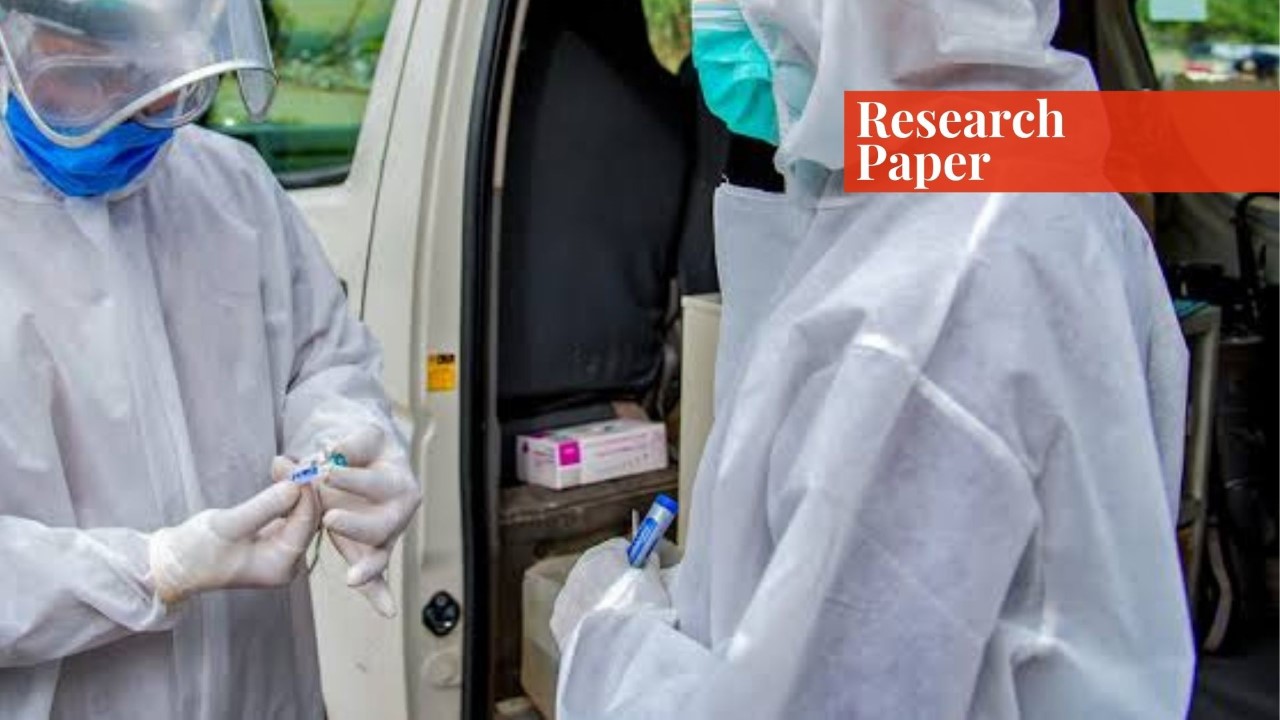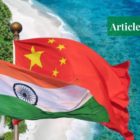Introduction
The purpose of the National Health Vision Pakistan (2016-2025) is to harmonise provincial and federal efforts as well as interprovincial sectors to achieve desired health outcomes.1 It has the following objectives:
- To improve health while ensuring provincial autonomy
- To build coherence between federal and provincial efforts
- To facilitate the synchronisation across international reporting
- To ensure coordination in surveillance, information collection, and regulation
- To create functional basis for charting and implementing the SDGs with other sectors
After 2011, there was a lack of consensus on a national vision of health in Pakistan because, after the 18th Amendment, constitutional responsibilities were given to the provinces. The “concurrent list” of federal powers was replaced by a list of provincial powers and a relatively small list of powers under the federal government.
The devolution of the health sector to provinces created both serious health challenges and opportunities. The Federal Ministry of Health was dissolved and now provinces had to create policy directions and planning. They also had to establish health departments and the Ministry of National Health Service, Regulation and Coordination.2
Requisites
Governance
Governance has always been a fundamental challenge for Pakistan, especially in its capacity to regulate the public and private sectors of the health market. The government must rebuild its health system through professional and independent advice and the technical governance of health services planning.
Pakistan must also introduce innovative management models that align with the preventive primary health targets. The government should allocate budget commitment for governance strengthening and for the establishment of dedicated structures within provincial and federal ministries.
Health Financing
Donor funding has been far less than that committed in the Paris declaration. It is imperative that the government organise adequate responsive and efficient health financing while increasing budget allocation to 3% of the GDP, as pledged in Pakistan’s national health vision.
Human Resources
Pakistan has one of the world’s lowest ratios of doctors, nurses and paramedics to the population. Skill mix and task shifting should be nurtured and institutionalised, with responsive management introduced in health departments.
Health Information System and Research
The health information system is really fragmented in Pakistan and it is recommended for the government to use innovative technologies to build coherence across the health information systems. There is also a need to establish a collaborative mechanism for high-quality research on national priority areas.
Essential Medicine and Technology
The government should introduce a drug pricing policy to protect the public interest by regulating the prices of essential medicines. It should strengthen the drug regulatory authority of Pakistan and revise the legislation to regulate drugs, organ donation, and blood transfusion.
Formation of the National Health Vision Pakistan (2016-2025)
Pakistan was among the first few countries that showed commitment towards the 2030 agenda of Sustainable Development Goals. The government of Pakistan carried out discussions with stakeholders and came to the conclusion that the strategies taken for health-related development foals could not be achieved.3 Further coordination and strengthening of efforts were needed to achieve the seven pillars of vision 2025.
The National Health Vision (2016–2025) is a result of the Pakistan Vision 2025.4 The National Health Vision (2016-2025) desires to not only meet the sustainable development goals but also enable Pakistan to assume other global health responsibilities through means that are affordable and responsive.5
The National Health Vision (2016-2025) acknowledges that much development and progress was not made when health provision was designated to provinces completely.6 One of the key factors that make this health vision progressive is its unified approach while safeguarding diversity and provincial autonomy for progress in health.
To remain parallel with the global health policies, this vision plans to assist actions and plans at the international level that Pakistan is a part of. Moreover, the focus is laid on constantly improving the health care system by means of research and collecting relevant data. The National Health Vision (2016-2025) aims to carry out these improved health care opportunities and practices in partnership with other sectors to achieve the overall SDGs that Pakistan has committed to.7
The Ministry of National Health Services, Regulation and Coordination, which has come up with this vision, has also taken measures for its effective monitoring and evaluation (M&E). The M&E framework will also make sure to suggest improvements where needed and finally, the reports will be presented in the parliament to gauge the success and failure of the policy.8
Comparing Bangladesh and Pakistan’s Health Policies
Globally, Pakistan was ranked 154th out of 192 states of the world in terms of provision as well as the accessibility of quality healthcare facilities, which is way below its South Asian counterparts such as India and Bangladesh who stand in 145th and 133rd positions respectively.
2021 marked the 50th anniversary of Bangladesh’s independence from Pakistan. A country that was labelled as a “basket with a hole” by Henry Kissinger, is on a progressive road in terms of economic prosperity and positive international recognition. Bangladesh has achieved all the MDGs of the health sector.9 It has also come up with a national vision that addresses the importance of healthcare.
Health Sector
Pakistan currently spends 1.2 percent of its GDP on health.10 Out-of-pocket payments, government revenues, developmental partners, private insurances, secondary sources to NGOs, and global funding provide for the majority of funding. HANDS, Shiffa Foundation, and Aga Khan Health Services are the primary internal NGOs, while external financing agencies include USAID and the UK’s Department for International Development.
According to Bangladesh’s National Health Accounts report, out-of-pocket payments account for around 64 percent of the total expenditure. It currently spends 2.34 percent of its total GDP. Since 2007, Bangladesh has received 8% of overall health spending from funding agencies. In terms of internal resources, the Global Alliance for Vaccines and Immunization, the Global Fund to Fight AIDS, Tuberculosis, and Malaria, and USAID are the primary external financial organizations for Bangladesh.
The most pressing concern confronting both Bangladesh and Pakistan is the lack of human resources in healthcare institutions. In both countries, health care resources such as financing and transportation are not allocated on a need-based basis.11
Although the National Health Vision (2016-2025) of Pakistan is a broad vision encompassing major areas of health concerns in the country, there are some other important issues, which can be accounted as structural, that need to be highlighted and worked upon for successful development of the healthcare system. These issues have been highlighted in the Country Cooperation Strategy for WHO and Pakistan: 2020–2025.
A major challenge to the health system of Pakistan is the limited investment in the health sector. There is an unrelenting need to strengthen the health system, which will improve Pakistan’s competency in implementing the International Health Regulations (IHR 2005).12
Impact of Covid-19 and the Effectiveness of the Vision
Covid-19 has impacted healthcare systems all around the world, rendering them vulnerable to external stimuli. Even highly developed and industrialized countries have struggled to prevent their healthcare systems from collapsing. Thus, Covid-19 has emphasized the necessity to improve healthcare systems.
Pakistan has the highest predominance rate of diseases like malaria, tuberculosis, polio and maternal issues.13 The healthcare system also lags behind when it comes to quality assurance, as compared to other South Asian states. Moreover, the geographical discrepancies that exist among the different provinces and the rural-urban divide are also neglected.14 All these factors provide reasoning for why there is an urgent need to ensure Universal Health Coverage (UHC).
Pakistan’s National Health Vision (2016-2025) has given priority to UHC and in that respect, has aligned several policies to it as well. For example, in 2016, Sehat Sahulat Program, a micro health insurance scheme, was initiated by the government of Khyber Pakhtunkhwa (KPK) which aims to provide financial aid and healthcare accessibility to the population living below the poverty line.
Around 7.4 million people have successfully enrolled themselves in the program.15 In 2020, KPK initiated a six-phase program to ensure UHC for all the residents of the province. In early 2021, the program became the first of its kind to ensure UHC for 100% of its population.
With the National Package of Essential Health Services serving as a milestone towards improvement in the healthcare system under the National Health Vision (2016-2025), Pakistan has successfully developed a proof-based UHC services program. It aims at providing equitable healthcare services to each and every segment of society.
Conclusion
To ensure the project’s long-term viability, the concerned organizations and the Ministry should collaborate in the planning and implementation phases. Medical professionals should be taught modern technology, and policies must be developed to promote e-health and professional development.
It is evident that the National Health Vision Pakistan (2016–2025) is very progressive as compared to its predecessors. It has taken an approach that could help Pakistan’s health care system to match international standards. However, the deficiencies in some policies and challenges in achieving objectives could hinder the way forward.
Endnotes
1 National Health Vision Pakistan 2016-2025. (n.d.). Retrieved December 24, 2021, from https://extranet.who.int/countryplanningcycles/sites/default/files/planning_cycle_repository/pakistan/national_health_vision_2016-25_30-08-2016.pdf
2 Zaidi, S. A., Bigdeli, M., Langlois, E. V., Riaz, A., Orr, D. W., Idrees, N., & Bump, J. B. (2019, January 1). Health Systems changes after decentralisation: Progress, challenges and dynamics in Pakistan. BMJ Global Health. https://gh.bmj.com/content/4/1/e001013
3 Ministry of National Health Services, Regulation & Coordination. (n.d.). National Health Vision Pakistan 2016-2025. https://phkh.nhsrc.pk/sites/default/files/2020-12/National%20Health%20Vision%20Pakistan%202016-2025.pdf
4 Ministry of Planning, Development & Reform. (n.d.). Ministry of Planning, Development & Special Initiatives. https://www.pc.gov.pk/web/sdg/sdgpak
5 Ministry of National Health Services, Regulation & Coordination. (n.d.). National Health Vision Pakistan 2016-2025. https://phkh.nhsrc.pk/sites/default/files/2020-12/National%20Health%20Vision%20Pakistan%202016-2025.pdf
6 Ministry of Health. (n.d.). National Health Policy 2009. Taking action for universal health coverage – UHC2030. https://www.uhc2030.org/fileadmin/uploads/ihp/Documents/Country_Pages/Pakistan/PakistanHealthPolicy2010-2015.pdf
7 Ministry of National Health Services, Regulation & Coordination. (n.d.). National Health Vision Pakistan 2016-2025. https://phkh.nhsrc.pk/sites/default/files/2020-12/National%20Health%20Vision%20Pakistan%202016-2025.pdf
8 Ministry of National Health Services, Regulation & Coordination. (n.d.). National Health Vision Pakistan 2016-2025. https://phkh.nhsrc.pk/sites/default/files/2020-12/National%20Health%20Vision%20Pakistan%202016-2025.pdf
9 Ahmer, M. (2021). How and why is Bangladesh better off than Pakistan today? The Express Tribune. https://tribune.com.pk/story/2290487/how-and-why-is-bangladesh-better-off-than-pakistan-today
10 Achakzai, J. (2021). Health expenditure: 1.2pc of GDP against WHO-recommended 5pc. The News https://www.thenews.com.pk/print/847694-health-expenditure-1-2pc-of-gdp-against-who-recommended-5pc
11 Bangladesh Vision 2021. Dhaka: Centre for Policy Dialogue (CPD). https://cpd.org.bd/wp-content/uploads/2007/08/Bangladesh-Vision-2021-English.pdf
12 Country cooperation strategy for WHO and Pakistan: 2020–2025. (n.d.). https://apps.who.int/iris/handle/10665/341869
13 The Global Fund to Fight AIDS, Tuberculosis and Malaria. https://www.theglobalfund.org/media/2631/oig_gf-oig-15-014_report_en.pdf
14 A Hope with Recent Reforms. (2013, January 1). ResearchGate. https://www.researchgate.net/publication/264534758_Political_and_economic_unfairness_in_health_system_of_Pakistan_A_hope_with_the_recent_reforms
15 Sehat Sahulat programme. (2021, May 2). The News. https://www.thenews.com.pk/tns/detail/828473-sehat-sahulat-programme
If you want to submit your articles, research papers, and book reviews, please check the Submissions page.
The views and opinions expressed in this article/paper are the author’s own and do not necessarily reflect the editorial position of Paradigm Shift.






















